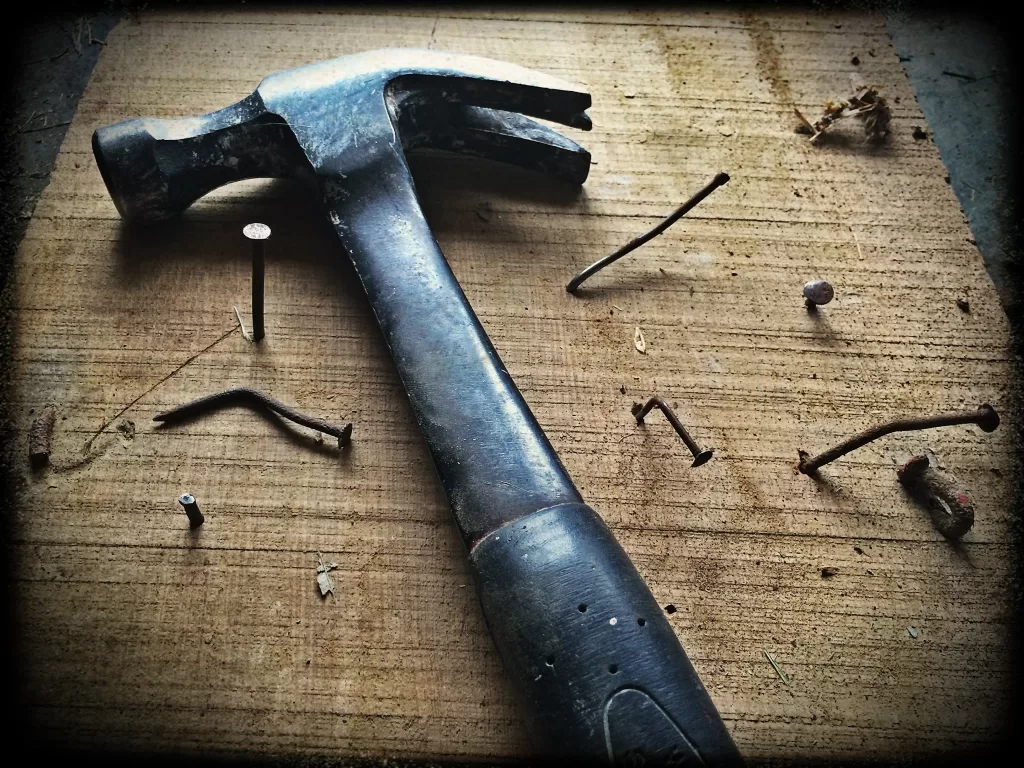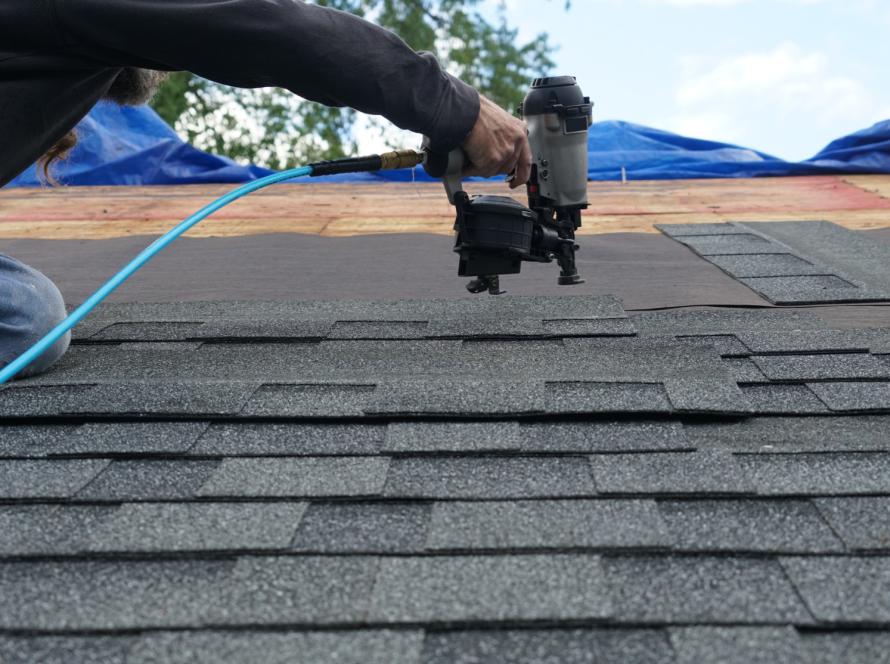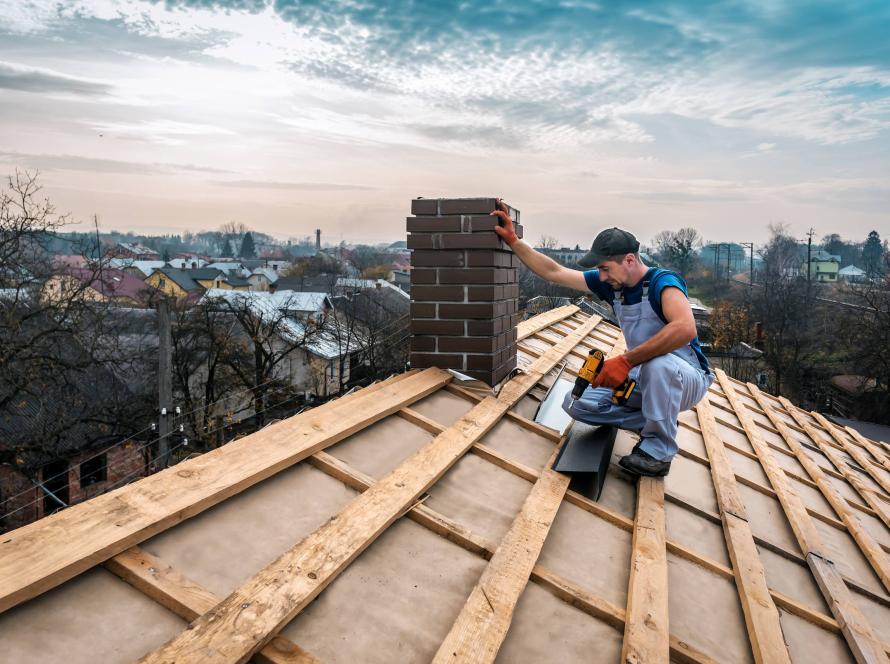Investing in a roof inspection is much like going to the doctor for a checkup. A roof inspection involves inspecting your roof from every possible angle, looking for signs of wear and damage.
An official roof inspection is performed by a roofing professional, but there are roof inspections you can perform yourself from the safety of the ground.
Roof inspections are a vital part of any roof maintenance program, because they identify and repair small issues that can become big ones. Roof inspections should be performed at least once per year, but the climate, environment, and age of the roof can affect the frequency.
Why are Roof Inspections Important?
Having your roof inspected regularly is the best way to extend the life and maximize the performance of your roof. A roof inspection will essentially be a snapshot (both figuratively and literally) of your roof’s condition at the time of the inspection.
One of the many benefits of regular roof inspections is that small problems, like a nail pop, have less time to cause damage before they are found. Water damage can occur quickly, so the sooner problems are discovered, identified, and corrected, the better.
Having a regular roof inspection performed will:
- Reduce the cost of ownership over time
- Maximize the lifespan and functionality
- Maintain the curb appeal
- Reduce or prevent major damage.

Who Can Perform a Roof Inspection?
The qualifications for performing roof inspections will vary with the location. In some states, like Tennessee, USA, roof inspections are usually performed by licensed professionals to maintain a standard level of quality.
In contrast, in the southern US roof inspections are commonly performed by someone with years of experience in the roofing industry. These roofing pros may also be licensed and endorsed by roofing manufacturers, but the local requirements will vary.
You can also perform a roof inspection yourself. Many DIYers enjoy developing their roof inspection skills because they can use them for a lifetime of home ownership. Generally, roof inspections performed by DIYers should be performed from the safety of the ground.
Insurance companies also employ roof inspectors to verify homeowner’s insurance claims. These roof inspectors will make a thorough inspection, but it will likely not include the detail a professional roof inspection would include.
Insurance company inspectors are just looking for enough evidence of damage to approve or disapprove a claim. They are not likely to provide a detailed report to you on the condition of your roof, but rather simply approve the claim or not.
What Does a Roof Inspection Include?
A typical roof inspection will include a close up inspection of your roof from both sides, if possible. Interestingly, roof inspectors can learn as much about the condition of your roof from the attic, as from the roof itself.
A roof inspection usually consists of a thorough examination of your roof, including the materials, like fiberglass asphalt, slate, wood, or metal. The roof inspector will inspect the roof decking (aka roof sheathing), the underlayment, and any radiant barriers or ice shields in place.
The roof inspector will take the age of the roof into consideration, the local climate, and other factors. Overhanging tree limbs, for example, add additional wear and tear to roof materials. Strong winds can also damage your roof, so the inspector will look for creases or gaps that could leak.
One of the most valuable benefits of a roof inspection is the guarantee that comes with it. You’ll receive a full report, including photographs, that support the inspector’s findings. This helps the homeowner visualize the problem, which also helps explain the recommended solution.
Roof inspectors use various methods, but any roof inspection is designed to assess the condition of your roof, and offen, the gutter system as well. Here’s a typical checklist a roof inspector might use:
Inspecting the Roof From the Ground:
- Visual evidence of a leak, like mold and mildew growth, dark streaks, and ceiling stains.
- Overhanging trees that drop debris
- Gutter overflows
- Missing or damaged shingles
- Hail damage
Inspecting from the Roof
- Use any personal protective equipment (PPE) required, like eye protection, gloves, and harnesses.
- Identify the type and gauge of the roof material. Is it appropriate for the roof size and design?
- Identify the approximate age. Does the age match the condition? Is something aging the roof prematurely?
Locate the source of any evidence of leaks.- Take photos, along with approximate measurements of the location of any leaks found.
Inspecting From Inside the Attic (if applicable)
If the home design provides an accessible attic space, the roof inspector will need access to it. Remove any furniture or toys that might block the attic access ladder from reaching the floor.
- Change PPE as needed for indoor use, like adding a respirator.
- Ensure the attic can support weight and there is a path to follow safely.
- Ensure no hazardous conditions exist, like excessive mold.
- Is lighting available?
- Use natural light, UV, and other methods to locate even the tiniest imperfections that can worsen if left undetected.
- Determine the cause of any potential leaks, like a nail pop, wind uplift, and underperforming underlayments.
- Devise a repair strategy to maximize the homeowner’s return on investment.
How Often Should I Have My Roof Inspected?

The frequency of your roof inspections will be affected by the condition and age of your roof, and the type of roof you have. Generally, roof inspections are performed on a bi-annual or quarterly schedule.
If your roof requires cleaning more than four times per year, consider upgrading your roof to a durable metal version, and installing gutter guards. You’ll likely save money over time, as well as hassles and water damage.
For example, a fiberglass asphalt shingle roof is a great cost effective option, but they are vulnerable to hail and other falling debris. These objects can easily damage these shingles, especially if the roof is warm.
Conversely, roofs with metal roof panels are designed to withstand significant impacts without damage. Metal roofs are also less affected by temperature, so small gaps and cracks are less likely to form during temperature fluctuations.
However, metal roofs are usually more expensive to purchase and install than a fiberglass asphalt roof, so there are financial considerations as well.
What Factors Affect the Cost of a Roof Inspection?
The cost of a roof inspection may vary significantly, depending on the size and design of your roof. Most roofs under 2000 square feet in area can be inspected for a minimum fee, but larger, more complex roof designs and difficult locations can cost more.
For example, a cabin home located on a steep hillside may require extra long ladders, additional safety requirements, or even a mechanical lift to access the roof safely. These concerns are amplified if the roof is unusually steep (8:12 or steeper).
Conversely, commercial roofs, and some residential homes, have low slope roofs that are much easier to walk around on. Even though they may be larger in physical size, they may take no longer to inspect than a smaller roof with difficult access.
How Can I Prepare for a Roof Inspection?
You can help the roof inspector do a good job by making sure they have access to the roof from both outside and inside. Here’s a quick list of actions you can take to make your roof inspection easier and more effective:
Clear Access
Your roofing professional will appreciate your efforts to make accessing your roof easier. Making sure parking is available, cars are out of the way, and the occupants are away from danger are among the most appreciated.
When these gestures are performed, the inspector can worry less about damaging cars and focus on your roof. Removing toys, opening gates, and confining pets goes a long way towards improving everyone’s safety.
Share Information With the Roof Inspector
Your roof inspector will have to guess at the age of your roof. If you can share information you have about the roof, like the age or brand, you’ll save the inspector time and effort. If you’ve discovered a ceiling stain, showing the inspector will help provide clues for finding the cause.
If you’re aware of a past repair that might have affected the condition of your roof, sharing the information can help the inspector focus their search for a leak. Repairs are a different age than the rest of the roof, so knowing where they are can also help the inspector make the best recommendations.
What Happens After a Roof Inspection?

Compare Quotes from Top-rated roofing contractors in your area.
If your roof is found to be in good working order and condition, the inspector will likely provide you with a detailed report and schedule the next inspection based on the findings.
If repairs are deemed necessary, the roof inspector will be able to provide you with options, based on your situation. If your roof has reached the end of its life, the inspector can make recommendations based on price, upgrades, and accessories that help you roof work better.
We’ve made finding a local, quality-minded roofing company easy. At Alpha Living, we’re focused on helping you find a local roofing company you can develop a lasting relationship with. You’ll have a contractor you can trust when the unexpected happens, and rest a bit easier at night.
To get started right away, use Alpha Living’s handy contractor search tool. Simply input your zip code, and you’ll be on your way to a great, long-lasting relationship you can depend on.





Facebook
Comments